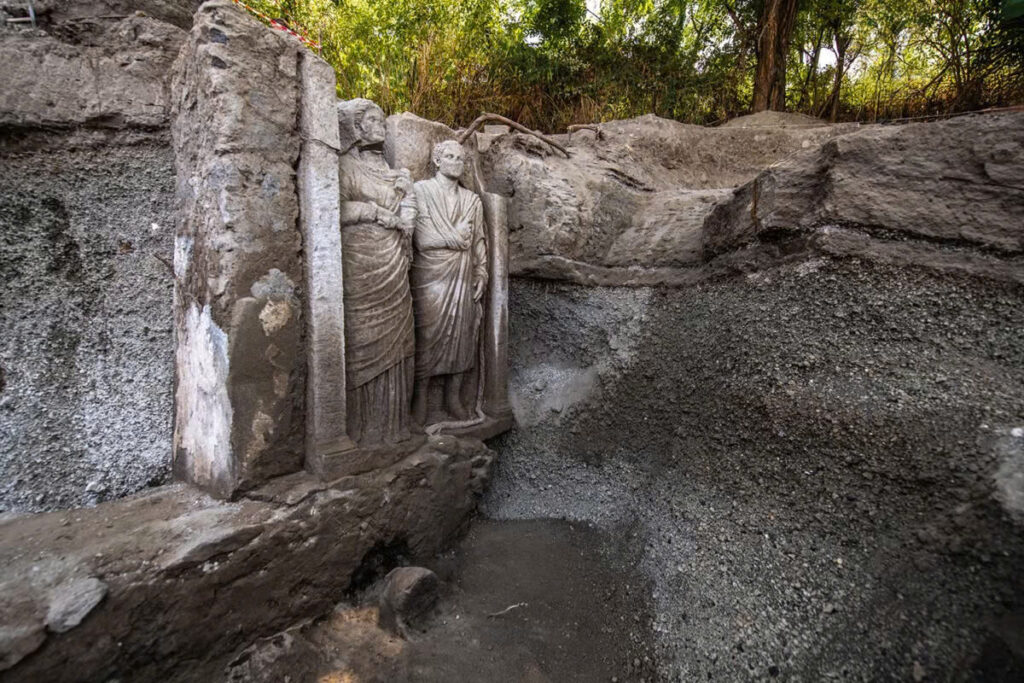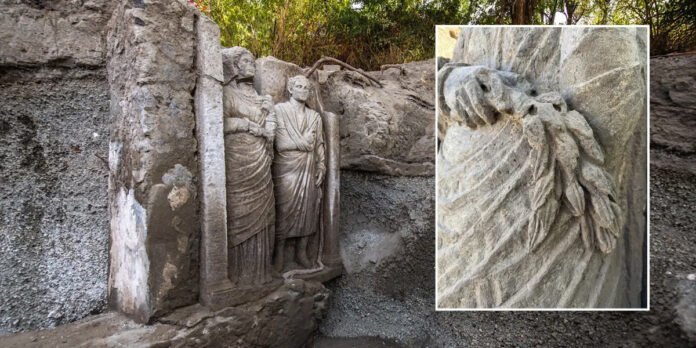A groundbreaking archaeological discovery in Pompeii’s Porta Sarno necropolis has revealed an almost life-size funerary relief of a couple, offering fresh perspectives on social status and religious practices in the ancient Roman city before its destruction in 79 AD.
Significant Archaeological Find Sheds Light on Pompeii’s Elite
Archaeologists from the Universitat de València, in partnership with the Pompeii Archaeological Park, have unearthed a remarkable high-relief sculpture depicting a man and woman as part of the research project “Investigating the Archaeology of Death in Pompeii.” Led by Professor Llorenç Alapont, the excavation began in July 2024, though the area had previously been partially explored during railway construction in the 1990s.

The recently discovered relief adorns a monumental tomb characterized by a large wall with several niches, suggesting the depicted couple held significant social standing in Pompeian society. Of particular interest to researchers is the female figure, whose symbolism indicates she may have been a priestess of the goddess Ceres—revealing important information about women’s roles in the city’s religious life.
Restoration Process and Exhibition

The high-relief figures have been transferred to the Palaestra Grande for meticulous restoration and will feature prominently in the upcoming exhibition “Being a Woman in Ancient Pompeii,” opening April 16, 2025. In an innovative approach, visitors will be able to observe the restoration process as it unfolds within the exhibition space itself.
Video
Dating and Historical Context

Art historians have dated the relief to the late Republican period based on its stylistic features and artistic quality. Gabriel Zuchtriegel, director of the Pompeii Archaeological Park, emphasized how this era saw local elites reinforcing their social identities through imposing funerary monuments, making this discovery particularly valuable for understanding Pompeii’s extramural social dynamics.
Insights into Funerary Rituals
Beyond the impressive sculpture, excavations have uncovered evidence of elaborate funerary practices, including ceramic remains and glass ointment jars likely used in libation ceremonies. These artifacts suggest that perfumed oils played a crucial role in creating a multisensory funeral atmosphere, helping to mask the unpleasant odors associated with death.

The comprehensive findings from this multidisciplinary team—comprising archaeologists, architects, restorers, and anthropologists—have been published in the E-Journal of the Excavations of Pompeii, where researchers present theories regarding the identity of the figures and the broader funerary context.
As work continues at the Porta Sarno necropolis, these discoveries promise to reshape our understanding of Pompeii’s social hierarchies and religious landscape, particularly highlighting women’s active participation in religious practices that had previously been underestimated in traditional interpretations of ancient Roman society.

